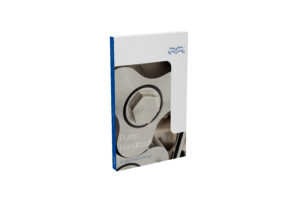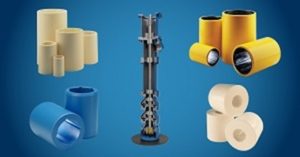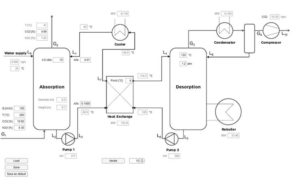Spoilt for Choice When Selecting Pumps: What to Bear in Mind Before Buying
Anyone seeking to buy a new pump for their water logistics system will need to answer a lot of questions first before they receive any recommendations from the manufacturers. Here is a brief overview of what to expect:
1. What should be pumped?
This is a fundamental question. Pumps cannot pump all fluids. There are four major groups: Pumps for clear water, grey water, sewage and saltwater. The latter are also often used to pump other chemical-reactive media and are consequently made of durable material. Stainless steel is usually used when pumping drinking water. Tip: Also attach anode blocks to the pumps to prevent corrosion.
2. What pumping volume?
The water volume that needs to be pumped (l/min or m³/h) is usually the factor that dictates the required pump output. Each pump covers one range and has an optimum, which is why there are so many types – for instance, the market leader Tsurumi has around 800. Pumps for grey water can move up to 30 m3/min. Don’t forget to take into account the diameter of any pipes through which the pumped volume needs to pass. Tip: Opt for slower pumps because they are less prone to wear.
3. How high can the medium be pumped?
This question is linked to the previous one because the pumping volume will decrease the higher it is pumped. The main factor here is the absolute height difference between the lower and upper water level (geodetic head). High pressure pumps can pump up to more than 200 m. The same thing also applies if, instead, the horizontal distance is very large. Tip: Sometimes two (identical) pumps can be operated in series if an adapter is used – the second pump acts as a booster and almost doubles the output.
4. Does ‘snoring’ occur?
This is what experts refer to when not only water, but also air, is suctioned in; for instance, at removal points where the water level is (too) low in some cases. This is critical for many pump motors because they will overheat very quickly without any water to cool them. Tip: Ensure that the pumps have a dry-run protection feature – this will allow them to withstand this torture.
5. Does the water volume vary?
If the pump is required infrequently, pumps with permanently attached level sensors are the solution because they switch on and off automatically. Electrode sensors are much more reliable than mechanical contact switches. Alternatively, an external control unit can be used. Tip: Frequency converters ensure a gentle start-up, prevent pressure surges and balance out multi-pump systems.
6. Is there solid matter in the pumping medium?
This question is particularly important when considering grey water and sewage pumps, each of which can only handle a certain amount of solid matter. If this matter is grainy, like for instance grey water, the filter perforation size in the pump indicates which particles can still pass; some of which are up to 30 mm. Sewage pumps become blocked more quickly than other pumps, which is why they need impellers with cutting blades that can even chop up interwoven fibres. Tip: Wherever viscous media are pumped, use mixers in front of the suction inlet to ensure that these media flow more freely.
7. Temperature of pumping medium?
Most media are pumped at temperatures of around 40 degrees, although higher values can be expected in processes. In this case, customised solutions are needed. Important design features here are heat discharge process and a seal. Pumps with an outlet at the top or a spiral casing will discharge more heat. Tip: Never operate a pump outside the defined thermal operating limits.
8. Electrical confection?
There are pumps for almost all capacity ranges. The higher the range, the higher the connected load needs to be, and an appropriate connection on site is required. Often the (high!) start-up current of the pump is not taken into account, especially when a power set is used. Most pumps are operated in a single phase with 230 V or in three phases with 400V. They are all connected with direct or star-triangle starters. Tip: Only use pumps with APEX-approval in potentially explosive areas.
9. Installation and operation?
Some pumps may only be installed in a dry environment in the pumping station. In contrast, submersible pumps are operated whilst submerged in the medium. The maximum submersion depth is stated in the data sheet. Some can even be mounted in a dry environment. Just ask if they are suitable for permanent operation. Tip: Ensure that the pump has a centrifugal oil lubrication system because these will work perfectly in either horizontal or vertical installation positions.
10. Should I carry out the maintenance work myself?
Anyone seeking to save money can carry out the most common maintenance tasks themselves on site, thereby ensuring that there are no downtimes because the pumps do not have to be returned to the manufacturer for servicing. Therefore, it is always a good idea to opt for modular pumps. Typical maintenance includes replacement of the impeller at the intake opening – only a few screws need to be removed in Japanese pumps. Tip: Nevertheless, opt for manufacturers who have a good service network.
Summary:
It is advisable being well prepared when you talk to pump experts, because having the information about the application and local environment at your fingertips will speed up the process considerably. And then there is the question of the delivery time. This might be decisive because there are only few manufacturers that have large stocks of pumps - most usually produce to order. In general, users should also consider lease options: Major manufacturers and dealers will keep their own stocks of lease units available - anyone who does not know the needs exactly can experiment before investing.
Source: Tsurumi (Europe) GmbH







